|
The Benefits of Doing Pilates with a Partner
Pilates is an incredibly effective form of exercise that can bring about numerous physical and mental benefits. One way to add an extra element of enjoyment and motivation to your Pilates practice–and by celebrating your LOVE this month of February– is by doing it with a partner. Whether it's a friend, family member, or significant other, partnering up for Pilates can take your workout experience to a whole new level! Here are some of the benefits of doing Pilates with a partner: Motivation and Accountability Partnering up for Pilates can provide an extra layer of motivation and accountability. When you have a committed partner, you're more likely to stick to your workout routine. You can encourage each other to stay consistent and push through the challenging moments, leading to better adherence to your Pilates practice. Increased Enjoyment Exercising with a partner can make the entire experience more enjoyable. You can share in the satisfaction of completing a challenging Pilates routine and celebrate each other's progress. The social aspect of working out with a partner can make Pilates feel less like a chore and more like a fun activity. Correct Form and Alignment Having a partner during Pilates sessions can provide an opportunity for real-time feedback on form and alignment. You and your partner can help each other maintain proper posture and positioning, reducing the risk of injury and maximizing the effectiveness of each movement. This can lead to better overall performance and results. Enhanced Support and Connection Partnered Pilates workouts can foster a sense of support and connection. You and your partner can cheer each other on, offer encouragement during challenging exercises, and celebrate achievements together. This shared experience can strengthen your bond and create a supportive workout environment. Variety and Creativity Working out with a partner can open up new possibilities for variety and creativity in your Pilates routine. Partner-assisted stretches, resistance exercises, and synchronized movements can add a fresh dimension to your workouts, keeping them dynamic and engaging. Teamwork and Communication Partnered Pilates workouts require teamwork and communication. You and your partner can practice coordination, cooperation, and effective communication as you navigate through different exercises. This can help build trust and understanding between partners, both inside and outside of the Pilates studio. In conclusion, practicing Pilates with a partner can offer a multitude of benefits, from increased motivation and accountability to enhanced enjoyment and support. Whether you're looking to shake up your routine, improve your form, or simply enjoy a shared experience, partnering up for Pilates can add a new dimension to your fitness journey. Give it a try and discover firsthand the positive impact it can have on your Pilates practice.
0 Comments
Pilates vs. Yoga: Understanding the Differences
When it comes to mind-body exercises, Pilates and yoga are often at the forefront of the discussion. Both modalities offer a range of benefits, including improved flexibility, strength, and mental well-being. However, it's essential to understand that while Pilates and yoga share some similarities, they are distinct practices with differing foundations, movements, and goals. Foundations and Origins One of the primary distinctions between Pilates and yoga is their historical and philosophical roots. Pilates was developed in the early 20th century by Joseph Pilates, who aimed to create a system that strengthens the mind and body while promoting overall well-being. The method focuses on controlled movements, proper breathing, and the use of specialized equipment like the reformer and cadillac. At Pilates Center Fort Worth, we utilize Basi Systems Pilates equipment, some of the best in the industry. In contrast, yoga has a rich history that dates back thousands of years, originating in ancient India. Yoga encompasses a diverse range of practices, including physical postures (asanas), breath control (pranayama), and meditation. It has deep spiritual and philosophical teachings, with various schools and styles such as Hatha, Vinyasa, and Ashtanga, each emphasizing different aspects of the practice. Movement and Emphasis Pilates and yoga also differ in their movement styles and primary emphases. Pilates exercises are designed to engage the body's core muscles, focusing on precision, control, and alignment. The movements often target the powerhouse muscles—the abdomen, lower back, hips, and glutes—and aim to improve overall strength, stability, and coordination. Private Pilates sessions can do even deeper into some of these concepts, as well as tailor a routine for your specific needs and goals. Yoga, on the other hand, incorporates a broader range of movements, including standing, seated, and balancing poses, as well as sequences that flow from one posture to another. While yoga also strengthens and tones the body, it places significant emphasis on flexibility, balance, and the integration of breath and movement. Furthermore, yoga practices often include relaxation and meditation techniques aimed at calming the mind and reducing stress. Breathing Techniques Both Pilates and yoga highlight the importance of proper breathing, yet each approach has its unique breathing techniques. In Pilates, practitioners are taught to engage in lateral thoracic breathing, where the ribcage expands to the sides and back, facilitating deeper engagement of the core muscles. This breathing pattern supports the execution of precise movements and helps stabilize the body during exercises. In yoga, various breathing techniques, known as pranayama or belly-breathing, are utilized to regulate the breath and enhance the mind-body connection. These techniques can range from calming and grounding breaths to more energizing and invigorating practices, all of which play a crucial role in the overall yoga experience and its effects on mental and physical well-being. Final Thoughts Choosing between Pilates and yoga ultimately depends on individual preferences, fitness goals, and overall wellness objectives. Some individuals may find that the dynamic, flowing nature of yoga resonates with their needs for stress reduction and flexibility, while others may prefer the precise, core-focused movements of Pilates to build strength and body awareness. For many, including myself, incorporating elements of both Pilates and yoga into their routines can provide a well-rounded approach to fitness and holistic well-being. When you’re ready to start your Pilates journey, we’d love to welcome you! We’re very excited to be offering BASI Pilates Comprehensive Teacher Training Program in Fort Worth in 2024! When it comes to Pilates, there is no shortage of approaches and methods available to enthusiasts and practitioners. Each approach brings its own set of principles and techniques. However, one approach that stands out from the rest is BASI Pilates. Developed in 1989 by Rael Isacowitz, a renowned Pilates expert, Body Arts and Science International (BASI) Pilates offers a unique and comprehensive approach to Pilates training.
Emphasis on Anatomy and Science One of the key distinguishing factors of BASI Pilates is its focus on anatomy and science. Rael Isacowitz has combined his background in dance, athletics, and physical therapy to create a method that is grounded in understanding the human body's biomechanics. In BASI Pilates, the movements and exercises are designed to not only improve strength and flexibility but also to promote optimal alignment and movement efficiency. Perfect Balance of History and Innovation BASI Pilates honors Pilates history and the legacy handed down by Joseph Pilates by providing students with a solid foundation in all aspects of the Pilates Method. As such, the entire original repertoire is addressed and all equipment is studied. This respect for tradition is balanced with an openness to scientific and technological advances. This openness has produced the BASI Block System, the F2 System, BASI Interactive, and many other innovations that organically supplement the pioneering work of Joseph Pilates. Systematic Teaching Progression BASI Pilates follows a systematic teaching progression that focuses on building a solid foundation before progressing to more advanced exercises. The BASI Pilates Comprehensive Teacher Training Program starts with the Foundational Program, which includes the full Mat Program as well as a thorough introduction to fundamental and intermediate exercises on the Reformer, Cadillac, Wunda Chair, and Ped-a-Pul. The Graduate program follows, giving students comprehensive knowledge of Pilates on all the Pilates apparatus, including the Reformer, Cadillac, Wunda Chair, Ladder Barrel, F2 Spine Corrector, F2 Arm Chair, Ped-a-Pul, Mat, and other auxiliary apparatus. Graduates of the Comprehensive Program are well equipped for a successful, enduring career in the Pilates industry and are qualified to take the exam to become a Nationally Certified Pilates Teacher (NCPT). Integration of Contemporary Research BASI Pilates keeps up with the latest research and knowledge in the field of movement science. The method integrates contemporary research findings into its teaching approach, ensuring that clients receive the most up-to-date and evidence-based techniques. This commitment to ongoing learning and research allows BASI Pilates instructors to provide their clients with the most effective and safe training possible. Focus on Mind-Body Connection In addition to physical benefits, BASI Pilates places a strong emphasis on the mind-body connection. The method encourages clients to develop a heightened awareness of their bodies, focusing on the quality of movement and the connection between the mind and the body. This mindfulness component enhances the overall Pilates experience, promoting mental relaxation and stress reduction alongside physical fitness. Comprehensive Teacher Training Programs BASI Pilates sets itself apart by offering comprehensive teacher training programs. These programs are renowned for their depth and rigor, producing highly skilled and knowledgeable instructors. BASI Pilates believes that proper education and training are essential to becoming a well-rounded and competent Pilates professional. Whether you aspire to become a Pilates instructor or want to deepen your understanding of the method, BASI Pilates offers a range of training programs to suit your needs. BASI Pilates is not just another Pilates approach. Its emphasis on anatomy, integration of contemporary research, and systematic teaching progression make it unique among other methods. By focusing on the mind-body connection and offering comprehensive teacher training programs, BASI Pilates provides a holistic and effective approach that benefits clients and instructors alike. Whether you are a beginner or an experienced practitioner, exploring BASI Pilates can take your Pilates journey to new heights. Learn more here! I’ve been so excited to welcome our latest group of professional baseball players to The Pilates Center Fort Worth! Adding Pilates to the routine of these professional athletes was a no brainer. As a baseball player, your performance on the field depends on the coordination of various muscles and movements. To enhance your skills and improve overall performance, adding Pilates to your training routine can prove to be a game-changer. Pilates offers a myriad of benefits that can help you excel in the world of baseball. In this blog post, we will explore the many ways Pilates can benefit athletes, especially baseball players.
1. Improved Core Stability The core is the powerhouse of your body, and having a strong and stable core is crucial for baseball players. Pilates focuses on strengthening the deep abdominal muscles, including the transverse abdominis and obliques, which play a significant role in stabilizing the spine and pelvis. This improved core stability enhances your balance, agility, and overall body control in baseball related movements, such as swinging the bat or throwing the ball. 2. Increased Flexibility and Range of Motion Baseball requires a wide range of motions, from leg drives and rotating hips during a swing to throwing fastballs with precision. Pilates exercises promote flexibility and elongation of muscles, improving your range of motion. Regular Pilates practice helps prevent injuries by reducing muscle imbalances and improving overall joint mobility, allowing you to move more efficiently on the field and reducing the risk of strains or sprains. 3. Enhanced Strength and Power Pilates may be perceived as a low-impact exercise, but don't let that fool you. Pilates utilizes resistance training to target specific muscles and create long, lean bodies. By engaging in Pilates, baseball players can develop functional strength and power. Strengthening key muscles like the glutes, hamstrings, and core can help improve your batting power, throwing speed, and running speed on the baseball field. 4. Improved Posture and Alignment Proper posture and alignment are essential for optimal performance in baseball. Pilates exercises focus on spinal alignment and scapular stabilization, which can help correct muscular imbalances caused by overuse or poor posture during training or games. Pilates creates body awareness, reinforcing correct posture, and alignment habits that translate into better throwing mechanics, more powerful swings, and reduced risk of injuries like shoulder impingement or back pain. 5. Mental Focus and Body Awareness Success in baseball requires mental focus and body awareness. Pilates employs a mind-body connection, emphasizing concentration and mindfulness during each movement. By engaging your mind and body together, you can improve your proprioception and kinesthetic sense, making you more aware of your body's position and movements during the game. This heightened awareness can help you make split-second decisions and react faster on the field, giving you a competitive edge. 6. Injury Prevention and Rehabilitation Baseball, like any other sport, comes with its fair share of injuries. Pilates exercises, with their emphasis on controlled and precise movements, can assist in both injury prevention and rehabilitation. Many Pilates exercises focus on strengthening the stabilizing muscles around joints, such as the rotator cuff in the shoulder or the knee joints, reducing the risk of overuse injuries. Additionally, Pilates can aid in recovering from injuries by targeting specific muscles and promoting proper alignment throughout the rehabilitation process. Incorporating Pilates into your training routine as a baseball player can have remarkable benefits. Improved core stability, increased flexibility, enhanced strength, improved posture, mental focus, and injury prevention are just a few advantages that Pilates offers. So next time you step onto the baseball field, consider adding Pilates to your training regimen and experience the positive impact it can have on your performance and overall well-being. Get started here! The holiday season is upon us, and while it's a time of joy and celebration, it can also be a period of increased stress and physical exhaustion. With so many events to attend, gifts to buy, and expectations to meet, it's no wonder that many of us find ourselves feeling overwhelmed. However, there is a solution that can help you navigate the holidays with both physical and mental ease – Pilates!
Stress Relief and Mental Well-being Pilates is not just a physical exercise; it is a mind-body discipline that focuses on breath control, concentration, and precise movement. As we flow through different Pilates exercises, we become fully present in the moment, allowing our bodies to release tension and our minds to find calm. During the holiday season, when stress levels tend to skyrocket, Pilates can offer a sanctuary away from hectic schedules and overwhelming to-do lists. By focusing on your breath and engaging in controlled movements, you can quiet the chaos in your mind and tap into a state of tranquility. This helps reduce stress, anxiety, and even depression, leaving you feeling more centered and grounded. Improved Physical Strength and Stamina The holiday season can take a toll on our bodies too. Late nights, excessive indulgence in delicious treats, and a lack of exercise can leave us feeling sluggish and less than our best. However, incorporating Pilates into your holiday routine can help you maintain and even improve your physical strength and stamina. Pilates is a low-impact form of exercise that targets the entire body. By working on your core strength, flexibility, and posture, you can ensure that your body stays strong and supported throughout the busiest time of the year. Pilates exercises also provide a gentle way to recover from any holiday-related aches and pains, such as back strain from heavy shopping bags or tension headaches from the hustle and bustle. Boosted Energy Levels and Mindful Eating The combination of stress, irregular sleep patterns, and potentially unhealthy food choices during the holiday season can leave us feeling depleted. However, Pilates can help restore your energy levels and promote mindful movement patterns and eating habits. Regular Pilates practice increases blood flow and oxygenation throughout the body, resulting in increased alertness and vitality throughout the day. By committing to just a few sessions a week, you can combat the fatigue that often comes with the holiday season. Additionally, Pilates cultivates a deeper mind-body connection that extends beyond the mat. This heightened awareness often translates into more mindful eating habits. As you become more attuned to your body's needs during Pilates, you may find yourself making better food choices and indulging in holiday treats in moderation, rather than excessive consumption driven by stress or boredom. Creating a Sense of Community The holiday season is all about coming together and cultivating a sense of community. Pilates classes can be a wonderful way to not only take care of your mind and body but also connect with others on a similar wellness journey. Participating in group classes or sharing a private session with a loved one (called a duet) can foster a sense of belonging and support, making this time of year all the more enjoyable. To conclude, Pilates offers numerous mental and physical benefits that can make your holiday season a more enjoyable and stress-free experience. With its ability to reduce stress and improve mental well-being, enhance physical strength and stamina, boost energy levels, and promote mindful eating habits, Pilates is the perfect companion to help you navigate the holiday season with ease. So, take a break from the holiday chaos and give yourself the gift of Pilates—it's the present you truly deserve! The Thanksgiving holiday season is a time for gratitude, delicious food, and quality time with loved ones. However, it can also be a time when our health goals are challenged. From mouthwatering turkey dinners to irresistible desserts, it's easy to give in to temptation and abandon all our healthy habits. But fear not! With a little planning and mindful choices, you can enjoy the festivities while still staying on track with your health goals. Here are some of my top tips to help you stay healthy during the Thanksgiving holidays:
1. Prioritize Portion Control Thanksgiving feasts often involve large portions, but that doesn't mean you have to overindulge. Practice portion control by filling your plate with reasonable amounts of each dish. Opt for smaller plates to trick your mind into thinking you're consuming more. Load up on vegetables and lean proteins before serving yourself any calorie-dense dishes. 2. Balance Your Plate When assembling your Thanksgiving plate, aim for a balanced combination of protein, whole grains, and vegetables. Make roasted or steamed veggies the focal point, filling about half of your plate. Pile one-quarter of your plate with lean turkey or plant-based protein and the remaining quarter with whole grains like quinoa or wild rice. 3. Mindful Eating During the holiday hustle and bustle, it's easy to eat in a rush or while distracted. Slow down and savor each bite by practicing mindful eating. Engage your senses, chew your food thoroughly, and take breaks between bites. Pay attention to your body's hunger cues and stop eating when you feel comfortably full. 4. Stay Active Don't let the holiday break derail your exercise routine. Plan physical activities that you can enjoy as a family, such as a post-dinner walk, a friendly game of touch football, or even a dance-off in the living room. Staying active will not only help burn off extra calories but also boost your energy levels and enhance your mood. 5. Hydration is Key Amidst the excitement, it's easy to forget to stay hydrated, but this is crucial for maintaining your overall health. Drink plenty of water throughout the day to keep yourself adequately hydrated. And before you say yes to that next cocktail, remember that it could impair your judgment when it comes to food choices. 6. Get Plenty of Rest Adequate sleep is often overlooked but plays a vital role in our overall well-being. During the holiday season, it's important to prioritize quality rest. Aim for at least 7-8 hours of sleep each night to help regulate your hunger hormones and keep your immune system strong. 7. Choose Healthier Swaps Thanksgiving dishes can often be heavy in fat and sugar, but that doesn't mean you can't make healthier swaps. Try using Greek yogurt instead of sour cream or mayonnaise in dips and dressings. Opt for roasted sweet potatoes instead of the sugar-laden sweet potato casserole. Consider baking dishes instead of deep-frying to cut down on unnecessary oils. 8. Indulge Mindfully No holiday is complete without a treat or two! Give yourself permission to enjoy a small portion of your favorite holiday dessert. By savoring each bite and eating slowly, you can fully satisfy your sweet tooth while keeping your calorie intake in check. Remember, Thanksgiving is not just about the food; it's about creating lasting memories with loved ones. Focus on those meaningful moments, engage in gratitude, and practice self-care. With these tips in mind, you can navigate the Thanksgiving holidays while maintaining a healthy lifestyle. Happy Thanksgiving from our family to yours! Are you curious about trying Pilates but unsure whether to opt for a group class or private session? While both options have their merits, today we'll focus specifically on the benefits of taking a group Pilates class. Whether you're a beginner or an experienced practitioner, group classes can offer you unique advantages and to help you get the most out of your Pilates practice.
1. Motivation and Support One of the key advantages of group Pilates classes is the high level of motivation and support you receive. Exercising in a group setting enables you to connect with fellow participants who share similar health and fitness goals. The camaraderie and positive energy within a class setting can be incredibly inspiring and uplifting. When you see others working hard and making progress, it encourages you to push yourself further and stay committed to your own practice. 2. Increased Accountability In a group Pilates class, you're more likely to stay accountable to your workouts. When you have a regular class schedule with designated times to attend, it becomes easier to maintain consistency in your practice. Knowing that your instructor and classmates are expecting you to show up can serve as a powerful motivator to stick to your fitness routine. This level of accountability can be especially beneficial if you struggle with self-discipline when working out on your own. 3. Variety and Fun Group Pilates classes are known for their diverse range of exercises and routines. Pilates instructors often design classes that incorporate various props, equipment, and modifications to cater to different skill levels and individual needs. This variety not only keeps the classes engaging and enjoyable but also helps to challenge your body in new and different ways. Being part of a group class encourages you to try new exercises and techniques that you might not typically explore on your own, adding an element of excitement to your Pilates practice. 4. Cost-Effective Option If budget is a consideration, group Pilates classes tend to be more cost-effective than private sessions. By sharing the cost of an instructor's time with other class members, you can access high-quality instruction at a fraction of the cost. This affordability allows you to attend classes more frequently, increasing the potential for progress and overall improvement in your Pilates practice. As a bonus, additional class discounts are given when you take advantage of our membership options! 5. Social Connection Group Pilates classes provide an excellent opportunity to meet like-minded individuals who share your passion for health and wellness. Engaging in a common activity allows you to connect with others who prioritize their well-being. Over time, you may form friendships and support networks that extend beyond the studio walls. The social element of group classes can enhance your overall experience and make your Pilates journey even more meaningful. Join a Group Pilates Class at The Pilates Center Fort Worth! While private Pilates sessions certainly have their advantages, participating in a group Pilates class offers unique benefits that can enhance your practice. From increased motivation and support to a sense of accountability and affordability, group classes provide an empowering and enjoyable environment for your Pilates journey. So, don't hesitate—join a group Pilates class today and experience the numerous advantages it has to offer. In September, we added two additional group classes to our regular schedule, so now you have more options than ever to book a class that works for you. We look forward to welcoming you to The Pilates Center community! Note: At The Pilates Center, we offer a wide range of group Pilates classes suitable for all levels. For more information on our class schedule and how to join, please contact us at 817-737-2673. As the leaves change colors and a gentle nip fills the air, we are reminded that fall brings more than just pumpkin spice lattes and cozy sweaters. It also offers an abundance of delicious, nutrient-rich vegetables that can be easily incorporated into a plant-based diet. Today, we'll explore the numerous benefits of a plant-based diet and highlight some of the BEST produce that is in season at the moment.
The Benefits of a Plant-Based Diet A plant-based diet, rich in fruits, vegetables, whole grains, legumes, nuts, and seeds, has been celebrated by health professionals and researchers around the world for its remarkable benefits. Here are just a few reasons why you should consider adopting a plant-based lifestyle: 1. Enhanced Nutritional Intake: By focusing on plant-based foods, you naturally increase your intake of essential vitamins, minerals, and antioxidants. These nutrients play a crucial role in strengthening your immune system, promoting optimal digestion, and maintaining overall vitality. 2. Heart Health: Plant-based diets have been associated with a reduced risk of heart disease. The high fiber content and absence of cholesterol in plant foods contribute to lower blood pressure and improved heart health, reducing the chances of developing cardiovascular complications. 3. Weight Management: A plant-based diet naturally tends to be lower in calorie density, making it an effective choice for weight management. With an emphasis on nutrient-dense foods, you can indulge in a satisfying array of plant-based options, while still maintaining a healthy weight. 4. Gut Health: The fiber content in plant foods, such as vegetables, fruits, and whole grains, is a boon for gut health. These fibers act as prebiotics, nourishing the beneficial bacteria in your gut and promoting a healthy microbiome. A thriving gut microbiome is linked to improved digestion, enhanced immune function, and even better mood. Top Fall Vegetables to Add to Your Pantry Now that we've established the incredible benefits of a plant-based diet let's dive into the array of fall vegetables that can take your plant-powered meals to the next level: 1. Sweet Potatoes: Rich in beta-carotene, fiber, and potassium, sweet potatoes are an excellent addition to your fall menu. Roasted, mashed, or in soups - these versatile vegetables offer a satisfying sweetness that will nourish both your body and your taste buds. 2. Kale: This leafy green powerhouse is packed with vitamins A, C, and K, along with minerals like iron and calcium. Emerge from summer slump and celebrate the crisp air with a hearty kale salad or sautéed kale with garlic as a delightful side dish. 3. Butternut Squash: Bursting with vitamins A, C, and E, butternut squash is a true fall gem. Roast it, spiralize it into butternut "noodles," or make a velvety soup. The options are as versatile as they are delicious! 4. Brussels Sprouts: These mini cabbages are a nutritional powerhouse, providing folate, vitamin C, and fiber. When people tell me they don’t like these, I think it’s because they were served them boiled when they were little. They can be SO delicious if you ROAST them! Roast them with a touch of balsamic glaze or you can also finely chop them and add them raw to a seasonal salad for a delightful crunch. 5. Cauliflower: With its mild flavor and remarkable versatility, cauliflower is a fall vegetable that can be transformed into rice, mashed potatoes, or even a pizza crust. Rich in vitamins C and K, as well as fiber, this cruciferous vegetable deserves a prominent place on your plate. Embracing a plant-based diet not only benefits your health but also celebrates the bounty of the fall season. By incorporating nutrient-rich vegetables into your meals, such as sweet potatoes, kale, butternut squash, brussel sprouts, and cauliflower, you can unlock a world of flavors, textures, and culinary creativity. So, grab your apron, hit the local farmer's market, and start exploring the delicious wonders that a plant-based fall can offer. Your body and taste buds will thank you! Remember, dear readers, at Pilates Center Fort Worth, we believe that true wellness stems from nourishing both the body and the mind. Stay tuned for more invigorating articles on nutrition, fitness, and everything in between. Until next time! Growing by Leaps and Bounds
Fall can sometimes be a time of hibernation and slowing down, but not so in our studio! This Fall has gotten off to an AMAZING start at The Pilates Center Fort Worth! The environment and setup of a Pilates studio play a crucial role in enhancing the overall experience of everyone who steps foot in our doors. That’s why we were SO excited that we completed our studio expansion at the end of August. We truly appreciate everyone’s patience throughout the construction, and we’re so happy with the results! The expansion wasn’t just about getting bigger, it was about getting better for our clients. Our new space provides a sense of tranquility, allowing individuals to shift their focus inward and connect with their bodies. The use of natural light, calming colors, and well-ventilated spaces creates an inviting and peaceful atmosphere. Additionally, we’ve ensured ample space for movement, allowing for a seamless flow and uninterrupted sessions. The cleanliness, organization, and accessibility of our equipment and amenities are important to us, as they contribute to a safe and comfortable environment. In our new space, clients and instructors can fully embrace the mind-body connection, optimize their workouts, and achieve their wellness goals with greater ease and enjoyment. If you haven’t been in our new space yet, please- come check us out! On top of our expansion, we were blessed to welcome two new instructors in September: Anna Anders, a current TCU Classical and Contemporary Dance Major. Anna Anders is working to earn her BFA in Ballet and Modern Dance at Texas Christian University’s School for Classical & Contemporary Dance, along with a Pilates Teacher Training Certificate. Anna began her dance training at Western Arkansas Ballet and later joined the organization’s Pre-Professional Company, furthering her training in classical ballet, pointe, modern, and jazz. As a company member with Western Arkansas Ballet, Anna also had the opportunity to perform at Regional Dance America Festivals across the country. Since being at TCU, Anna has performed in excerpts from Swan Lake, excerpts from the Sleeping Beauty, and in a work by Christian von Howard, along with choreographic works set by members of the graduating classes of 2022 and 2023. Anna has also spent several summers with Burklyn Ballet Theatre, performing roles from Giselle, La Bayadére, Swan Lake, Graduation Ball, as well as other works of choreography set by master teachers. Anna is currently working towards certification through TCU’s 600-hour Pilates Teacher Training program. She looks forward to engaging with the Fort Worth community while furthering her knowledge and training in Pilates! Faith Wood, a current TCU Ballet and Strategic Communications major in the Honors college Faith is working towards a BFA in Ballet and Strategic Communications in the Honors college at Texas Christian University. She began her dance training at North Atlanta Dance Academy and then moved to Gulfshore Ballet in Fort Myers, FL where her parents reside today. Since dancing at TCU, Faith has had the opportunity to perform pieces choreographed by Adam Mckinney, Joy Bollinger, William Isaac, etc; along with choreographic works set by members of the graduating classes of 2021, 2022, and 2023. She fell in love with Pilates through TCU’s Pilates Teacher Training Certificate program and has been teaching Pilates classes in Fort Worth for the past year. Through Pilates and dance, Faith has found an appreciation for mind-body connection that she strives to share with her clients. Her passions for movement, curiosity, and teaching work together to create an environment that supports each client’s personal journey. Most importantly, Faith works to ensure her clients leave each session feeling empowered and proud of their work. We would love for you to come workout with us. View our Schedule and Rates here or book your first session here. Well fellow Texans, we survived the summer! With its sweltering days, I thought the heat might never end. It can be hard to prioritize our health and wellbeing in the summer, with the kiddos out of school, the heat intense, and crazy summer schedules. But come this Fall, there’s never been a better time to start (or restart!) your Pilates practice.
Here are the top 10 reasons why you should consider starting a Pilates practice this fall. 1. Stress Relief and Mental Clarity As the leaves change and the weather cools, Pilates provides the perfect opportunity to unwind and find mental clarity. This mind-body exercise helps reduce stress levels, allowing you to focus on breathing and movement. Say goodbye to the pressures of everyday life as you find tranquility on your reformer. 2. Improved Posture Sitting at a desk all day or looking down at screens can lead to poor posture. Pilates targets core muscles while promoting proper alignment, helping you achieve a strong and confident posture that supports long term spinal health and enhances your overall appearance. 3. Increased Flexibility Did the stress of summer leave you tight and stressed? Or maybe fall schedules are the stress culprit! Pilates can help improve your flexibility by elongating muscles and increasing your range of motion. Embrace the changing season by exploring the autumnal wonders with a more supple body. 4. Enhanced Strength and Muscle Tone Pilates is a full-body workout that engages muscles you never knew you had! By focusing on controlled movements and resistance, Pilates helps build lean muscle mass. Strengthen your body and witness the transformation as you embody grace and strength. 5. Boosted Energy Levels As the days grow shorter and darker, we may start to feel fatigued. However, Pilates can be your secret weapon against the fall slump. Engaging in regular practice will boost your energy levels and leave you feeling invigorated. 6. Injury Prevention In your athletic endeavors and even just the hustle and bustle of daily life, injuries can easily occur. Pilates, with its emphasis on proper form and alignment, acts as a shield against potential injuries. Incorporating Pilates into your routine this fall will provide a solid foundation for a healthier, injury-free lifestyle. 7. Weight Loss and Body Sculpting As cozy sweaters and layers become essential fall attire, staying in shape is crucial. Pilates is a low-impact exercise that burns calories and helps you shed those extra pounds. Let Pilates be your cornerstone for achieving your weight loss and body sculpting goals this season. 8. Improved Balance and Coordination Navigating through slippery leaves and uneven terrain can make fall activities challenging. Pilates enhances your balance and coordination, making it easier to stay agile and confident. Embrace autumn adventures with a newfound grace and stability. 9. Mind-Body Connection Pilates isn't just about the physical benefits; it's also about connecting with your mind and body. This holistic approach allows you to tune in, be present, and better understand yourself. You'll leave each Pilates session feeling renewed and balanced in both mind and body. 10. Community and Support Starting a Pilates practice this fall means gaining entry to a welcoming community of like-minded individuals. At The Pilates Center, you'll find camaraderie, encouragement, and a support system to guide you through your Pilates journey. Celebrate the changing seasons together and forge meaningful connections along the way. Joining the world of Pilates this fall offers an array of benefits that extend far beyond the exercise itself. From reducing stress and enhancing posture to improving strength and balance, Pilates is a transformative practice. Embrace the vibrant season and discover the countless ways Pilates can enrich your life. Start your journey this fall and witness the positive impact it has on your overall well-being. Let Pilates be the golden leaf of change that ignites your passion for a healthier and happier you! |
Heather GradkeI'm a BASI Certified Pilates Instructor by day, somewhat competent housewife by night. I used to have hobbies but then CHILDRENS. I am married to the love of my life and somewhat charismatic Rustin Gradke. I have 4 kids that are wonderful sometimes but mostly they just eat a lot. I'm a lover of God and movement and the occasional bowl of queso. Archives
July 2024
Categories |
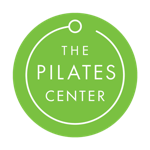
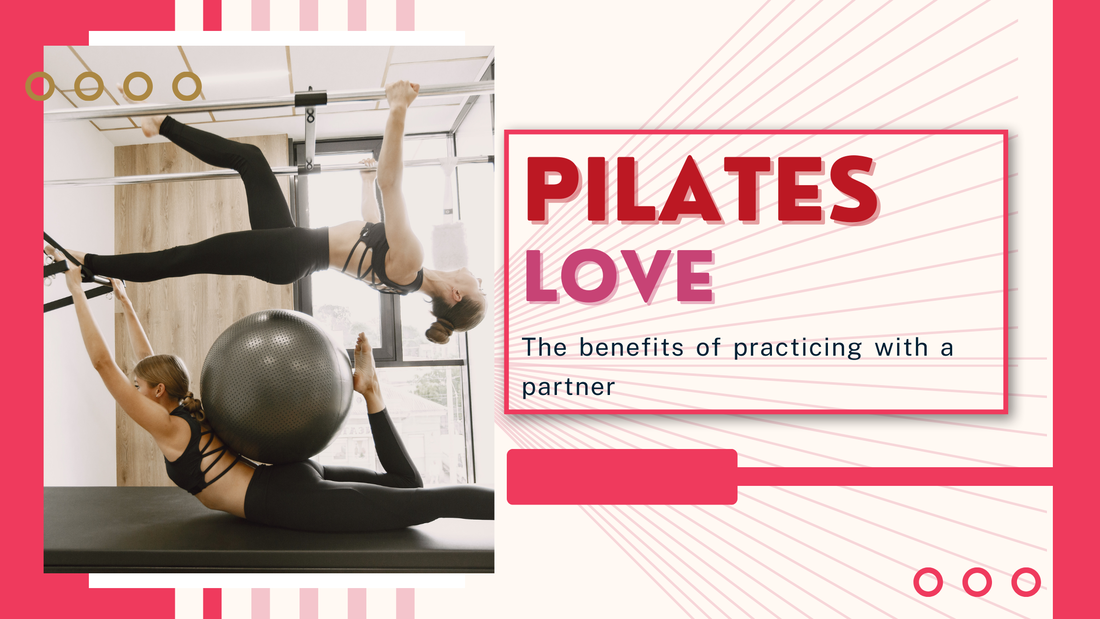
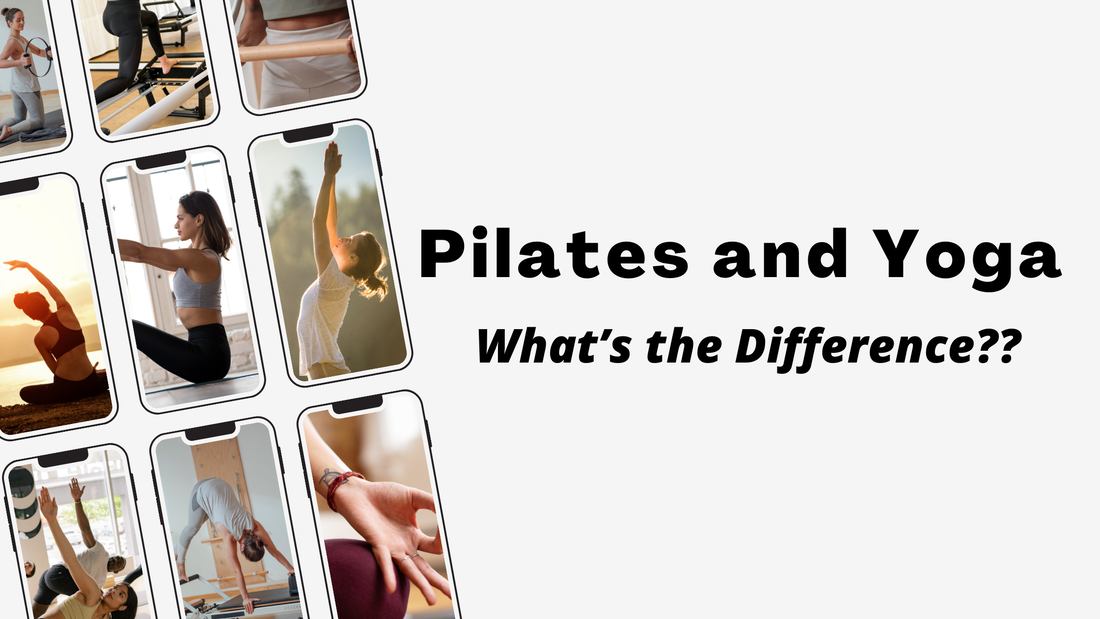
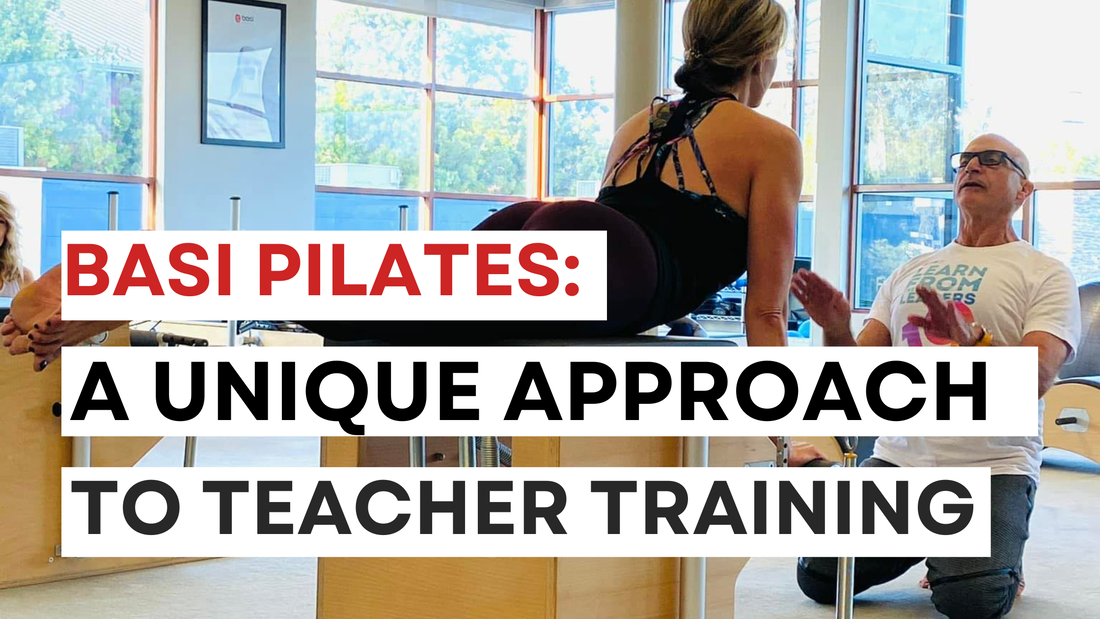



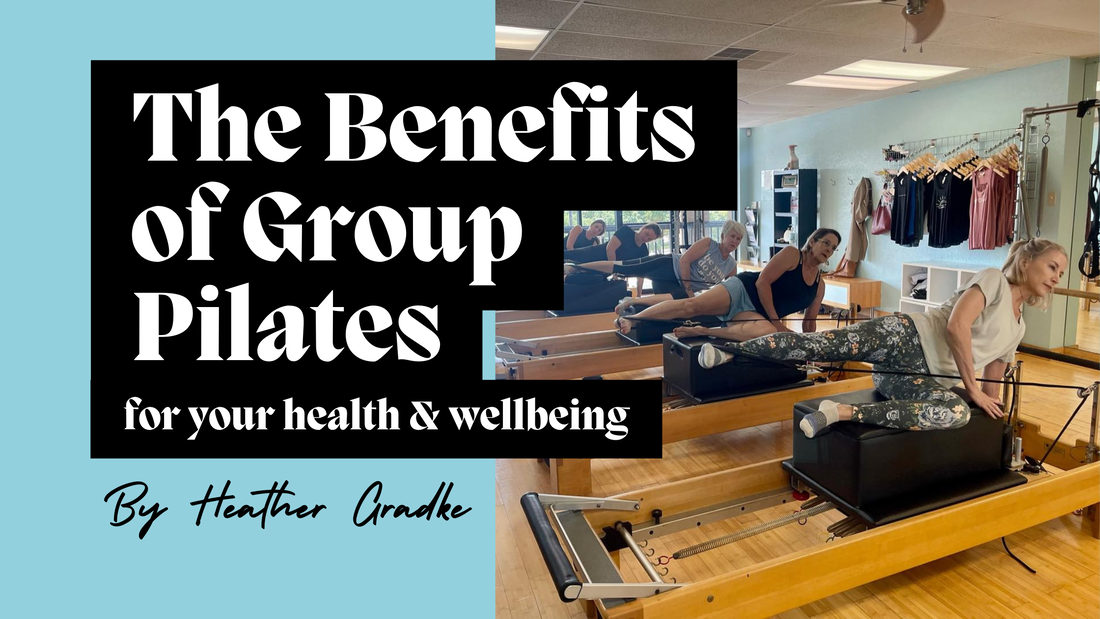
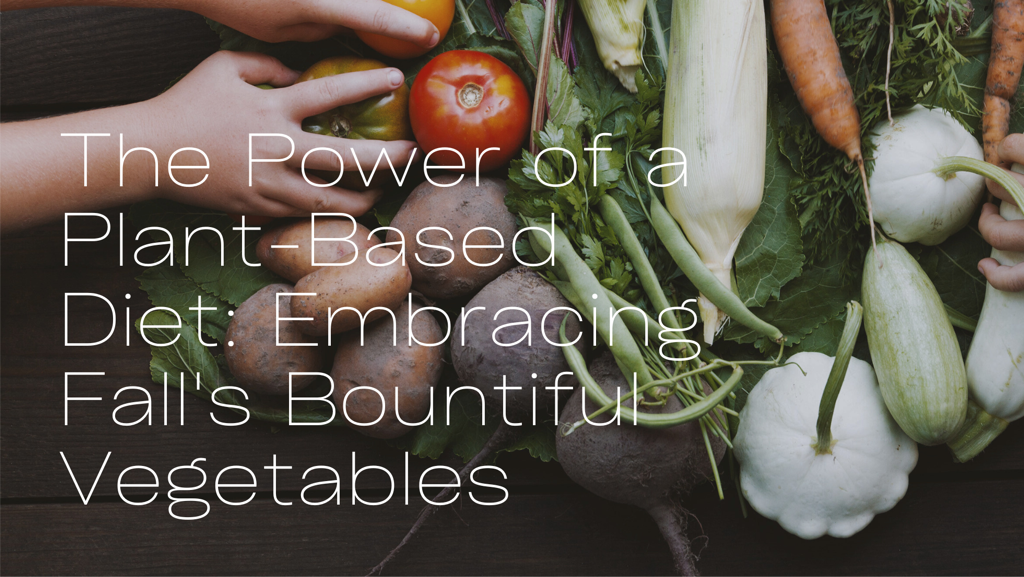
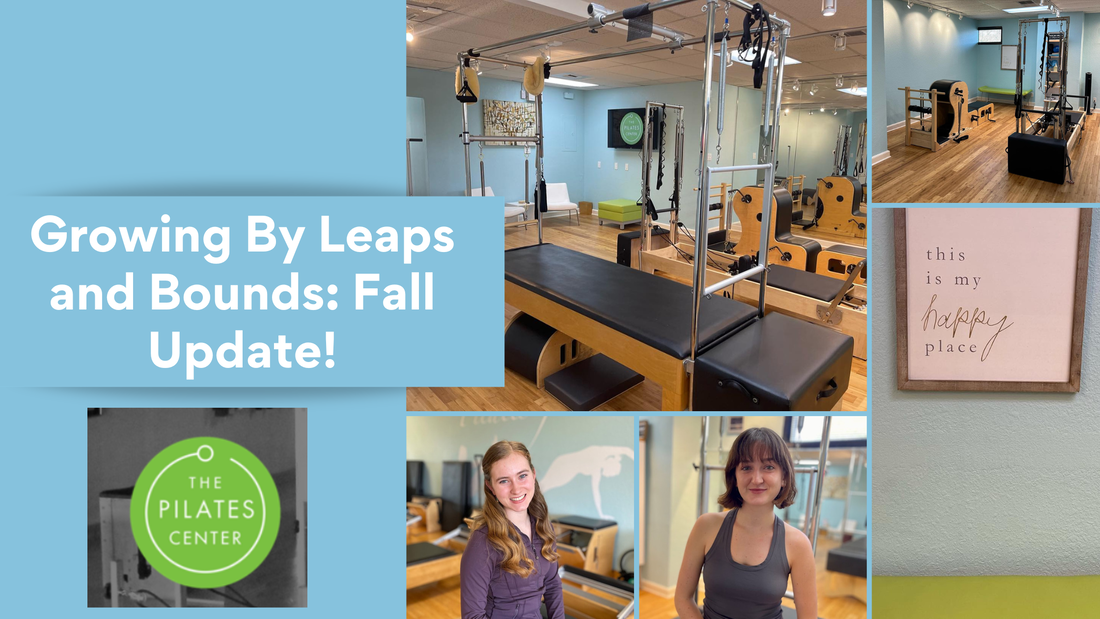
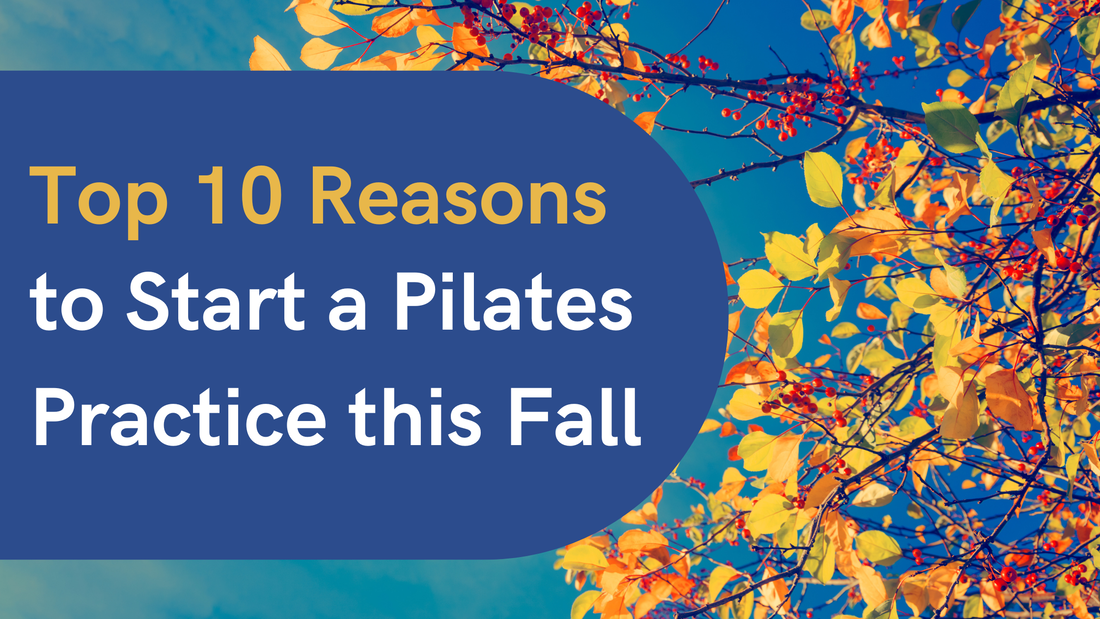
 RSS Feed
RSS Feed